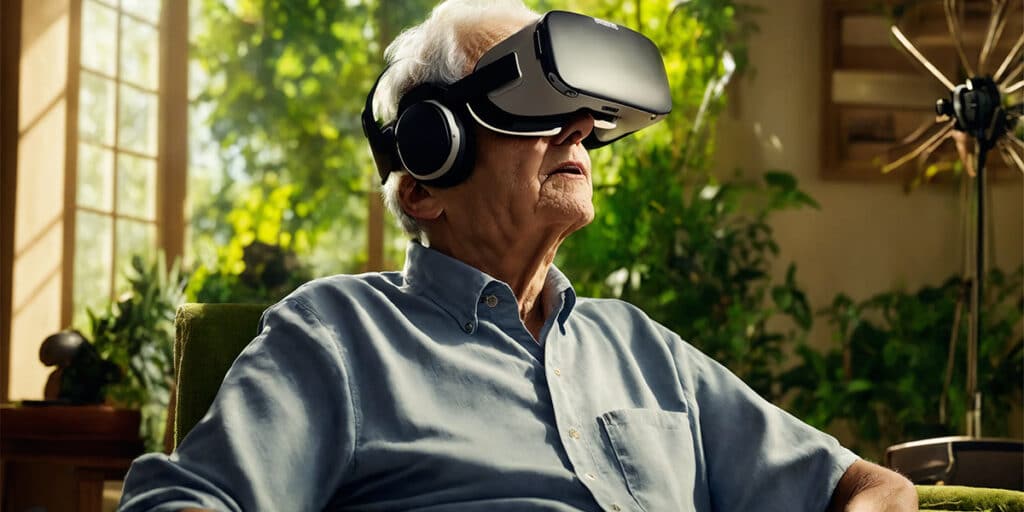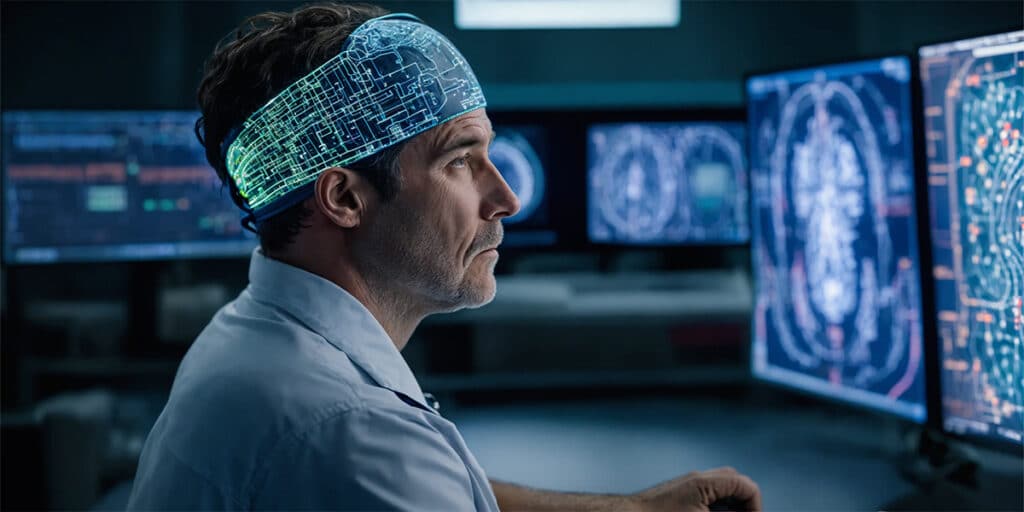In our fast-paced world, stress has become a constant companion for many. While stress affects various aspects of health, its impact on eating habits, particularly sugar cravings, is often overlooked. The quest for balance has led to the exploration of biofeedback as a tool for stress management, offering a promising avenue for those struggling to control their sugar intake.
This guide delves into how mastering the mind through biofeedback techniques can empower individuals to overcome sugar cravings, enhancing their overall well-being.
Understanding Biofeedback
Biofeedback is a technique that trains individuals to improve their health by controlling certain bodily processes that normally occur involuntarily, such as heart rate, muscle tension, and skin temperature. By using sensors that provide real-time feedback, individuals can learn to make conscious adjustments to their body’s responses, aiming for a desired outcome—such as relaxation and stress reduction.
- The Science Behind Biofeedback: Studies show that biofeedback can effectively reduce stress and anxiety levels. For instance, a study published in Applied Psychophysiology and Biofeedback found significant improvements in participants’ ability to manage stress through biofeedback training.
- Types of Biofeedback: There are various forms of biofeedback, including heart rate variability (HRV) biofeedback, electrodermal activity (EDA) biofeedback, and more, each targeting different aspects of the body’s response to stress.
Biofeedback and Stress-Induced Sugar Cravings
The link between stress and cravings, especially for sugary foods, is well-documented. Stress triggers the release of cortisol, a hormone that can increase appetite and cravings for high-sugar, high-fat foods. Biofeedback techniques that reduce stress can, therefore, play a critical role in managing these cravings.
- HRV Biofeedback for Craving Control: HRV biofeedback, which focuses on breathing and heart rate, has been shown to enhance self-regulation, reducing the urge to succumb to unhealthy eating habits.
- EDA Biofeedback to Recognize Stress Signals: By monitoring sweat gland activity, EDA biofeedback helps individuals recognize early signs of stress, providing an opportunity to intervene before cravings become overwhelming.
Biofeedback: A Tool for Awareness and Control
Biofeedback stands as a beacon of innovation in breaking this cycle, offering a methodology for individuals to become acutely aware of their physiological stress indicators. Through techniques such as heart rate variability (HRV) biofeedback and electrodermal activity (EDA) monitoring, individuals learn to identify the onset of stress responses in real-time. This awareness is the first step towards gaining control over such responses, enabling individuals to consciously employ relaxation techniques before stress levels escalate and lead to sugar cravings.
Techniques and Practices
Biofeedback techniques involve several practices that individuals can incorporate into their daily routines:
Heart Rate Variability (HRV) Biofeedback: By observing HRV, individuals can understand their body’s reaction to stress and learn to control it through breathing exercises. This control can mitigate the body’s stress response and reduce the subsequent craving for sugar.
Electrodermal Activity (EDA) Monitoring: EDA sensors detect sweat gland activity, which increases during stress. Monitoring these changes can alert individuals to stress early on, allowing them to take steps to calm down before cravings become overwhelming.
Mindfulness and Meditation: Coupled with biofeedback data, mindfulness and meditation practices can help individuals focus on the present moment and regulate their physiological responses to stress, reducing the likelihood of reaching for sugary snacks as a form of comfort.
| Technique | Focus Area | Common Tools | Benefits |
|---|---|---|---|
| Heart Rate Variability (HRV) | Heart Rate | Wearable HRV monitors | Improves emotional regulation, reduces anxiety |
| Electrodermal Activity (EDA) | Skin Conductance | Smartwatches, EDA sensors | Identifies stress responses, aids in relaxation techniques |
| Electromyography (EMG) | Muscle Activity | EMG biofeedback devices | Reduces muscle tension, alleviates stress-related pain |
| Thermal Biofeedback | Skin Temperature | Thermal sensors | Encourages relaxation, helps in stress and migraine management |
| Neurofeedback | Brain Waves | EEG headsets | Enhances concentration, reduces symptoms of anxiety and depression |
Implementing Biofeedback in Daily Life
Implementing biofeedback into daily life is a transformative approach to managing stress and curbing sugar cravings. This technique, which leverages the body’s signals to foster self-regulation and mindfulness, can be adapted through various means to suit individual needs and preferences. The utilization of wearable biofeedback devices and the practice of biofeedback exercises stand out as particularly effective strategies for seamlessly integrating this practice into everyday routines.
Wearable Biofeedback Devices
Wearable technology has made significant strides in making biofeedback accessible and continuous. Devices equipped with sensors to measure heart rate variability (HRV) or electrodermal activity (EDA) are particularly useful for individuals looking to manage stress on the go. These gadgets work by monitoring physiological markers of stress, providing real-time feedback that can alert the wearer to early signs of tension or anxiety.
For instance, an HRV monitor might detect changes in the heart’s rhythm that indicate stress or emotional distress. The device can then prompt the user to engage in a relaxation exercise, helping to avert the stress response before it escalates. Similarly, EDA sensors, which measure skin conductance—a marker of the sympathetic nervous system’s activity—can signal the onset of stress, guiding users to implement calming techniques. The advantage of these wearable devices lies in their ability to offer immediate, actionable insights, enabling users to address stress in the moment, which can be particularly beneficial for managing dietary impulses like sugar cravings.
Practical Biofeedback Exercises
In addition to technological aids, biofeedback principles can be applied through simple exercises that require no equipment and can be performed anywhere. Deep breathing and mindfulness meditation are foundational practices that leverage the biofeedback approach for stress reduction and emotional regulation.
Deep Breathing: This involves focusing on slow, deliberate breaths, which can help shift the body’s balance from the stress-induced “fight or flight” response to a more relaxed state. By paying attention to the rhythm of their breathing, individuals can learn to modulate their heart rate, reduce muscle tension, and decrease stress levels, making it easier to resist cravings for sugary foods that often accompany stress.
Mindfulness Meditation: Mindfulness involves maintaining a moment-by-moment awareness of our thoughts, feelings, bodily sensations, and the surrounding environment. Incorporating mindfulness meditation into daily routines can enhance an individual’s ability to remain present and engaged with their current state, fostering a heightened sense of control over physiological and psychological responses to stress. This practice can be particularly effective in recognizing and managing the triggers of sugar cravings, offering a path to healthier eating habits.
Biofeedback for Stress Management: Your FAQs Answered
What is biofeedback?
Biofeedback is a technique that enables individuals to learn how to control bodily processes that are typically involuntary, like heart rate or muscle tension, through real-time data feedback. This can significantly aid in stress management and overall wellness.
How does biofeedback work?
It involves attaching sensors to the body to measure physiological parameters such as heart rate, muscle tension, or skin conductivity. These measurements are then displayed on a screen in real-time, allowing individuals to become aware of these processes and learn to control them consciously.
Can biofeedback help reduce stress?
Yes, biofeedback is an effective tool for stress reduction. It empowers individuals to recognize their body’s stress responses and learn relaxation techniques to control these responses actively.
What are some common biofeedback techniques?
Common techniques include Heart Rate Variability (HRV) for emotional regulation, Electrodermal Activity (EDA) for identifying stress responses, and Electromyography (EMG) for reducing muscle tension.
Do I need special equipment for biofeedback?
Yes, biofeedback requires specific equipment to measure physiological activities, such as HRV monitors, EDA sensors, or EEG headsets. These can range from wearable devices to more sophisticated setups used by practitioners.
How long does it take to see benefits from biofeedback?
The time to see benefits can vary based on the individual and the specific technique used. Some people may notice improvements in stress management and relaxation techniques within a few sessions, while others may need more time to master biofeedback control.
Can biofeedback techniques be practiced at home?
Yes, with the advent of wearable technology and mobile apps, many biofeedback techniques can now be practiced at home, making it a convenient option for stress management.
Is biofeedback suitable for everyone?
While biofeedback is generally safe and non-invasive, it’s always best to consult with a healthcare provider to ensure it’s appropriate for your specific health condition or stress management needs.
How can I get started with biofeedback?
Starting with biofeedback typically involves consulting with a healthcare provider or a certified biofeedback practitioner who can recommend the most suitable technique based on your needs and guide you on using the necessary equipment.
Where can I find more resources on biofeedback?
Numerous resources are available online, including websites of biofeedback certification institutes, scholarly articles, and tutorials on how to use various biofeedback devices and techniques for stress management.
Citations
- “The Impact of Resonance Frequency Breathing on Measures of Heart Rate Variability, Blood Pressure, and Mood“ in NeuroRegulation. This research investigates the effects of resonance frequency breathing, a core component of many biofeedback interventions, on heart rate variability, blood pressure, and mood, finding improvements across all measured outcomes.








